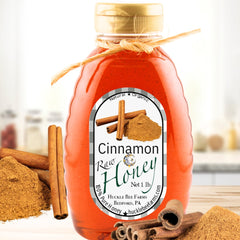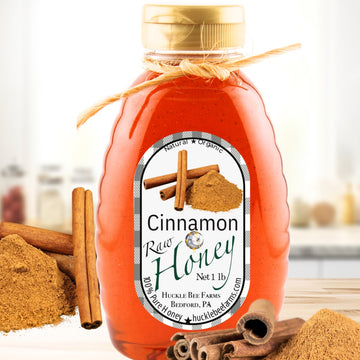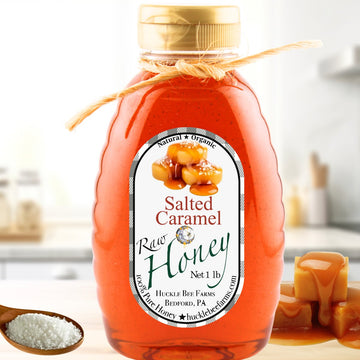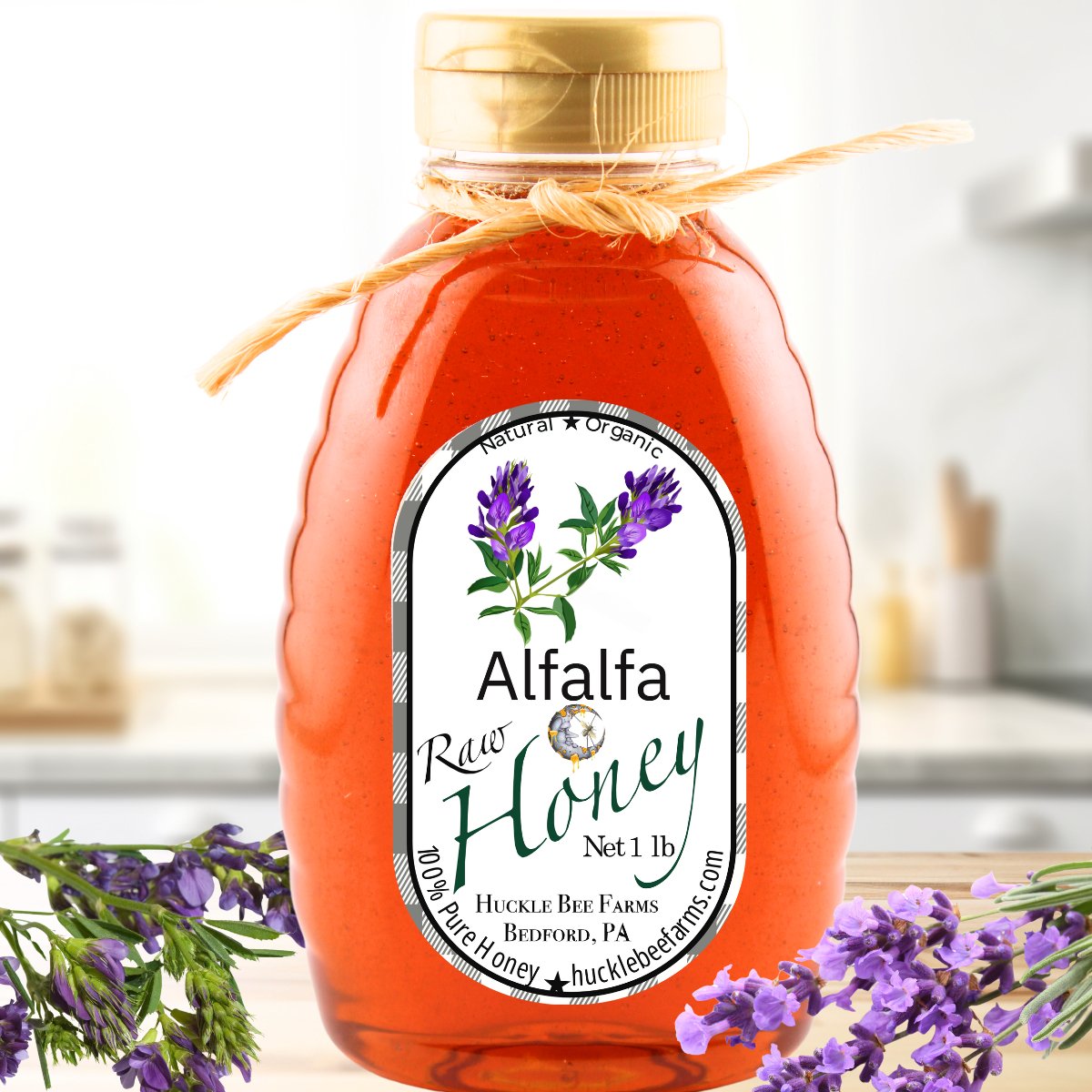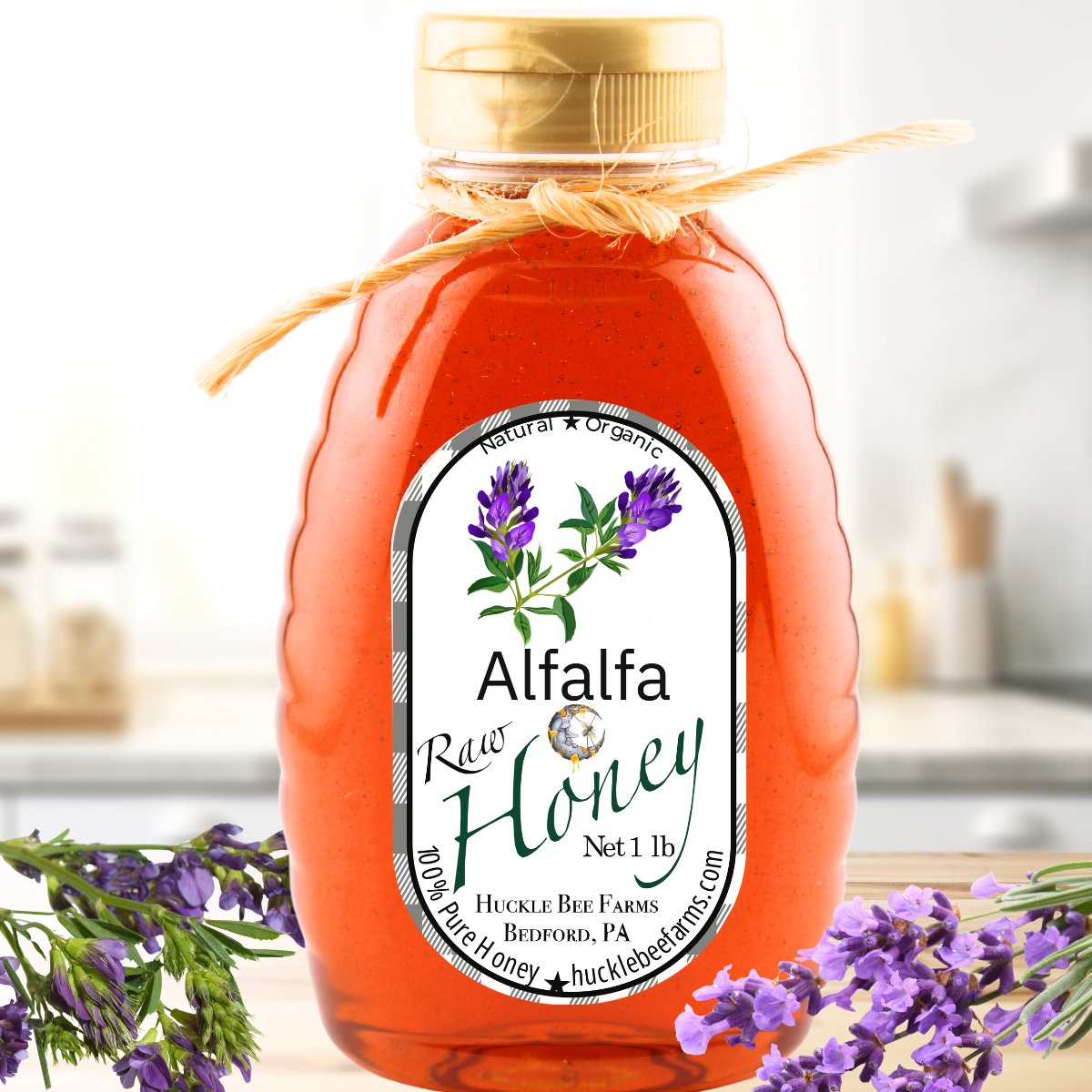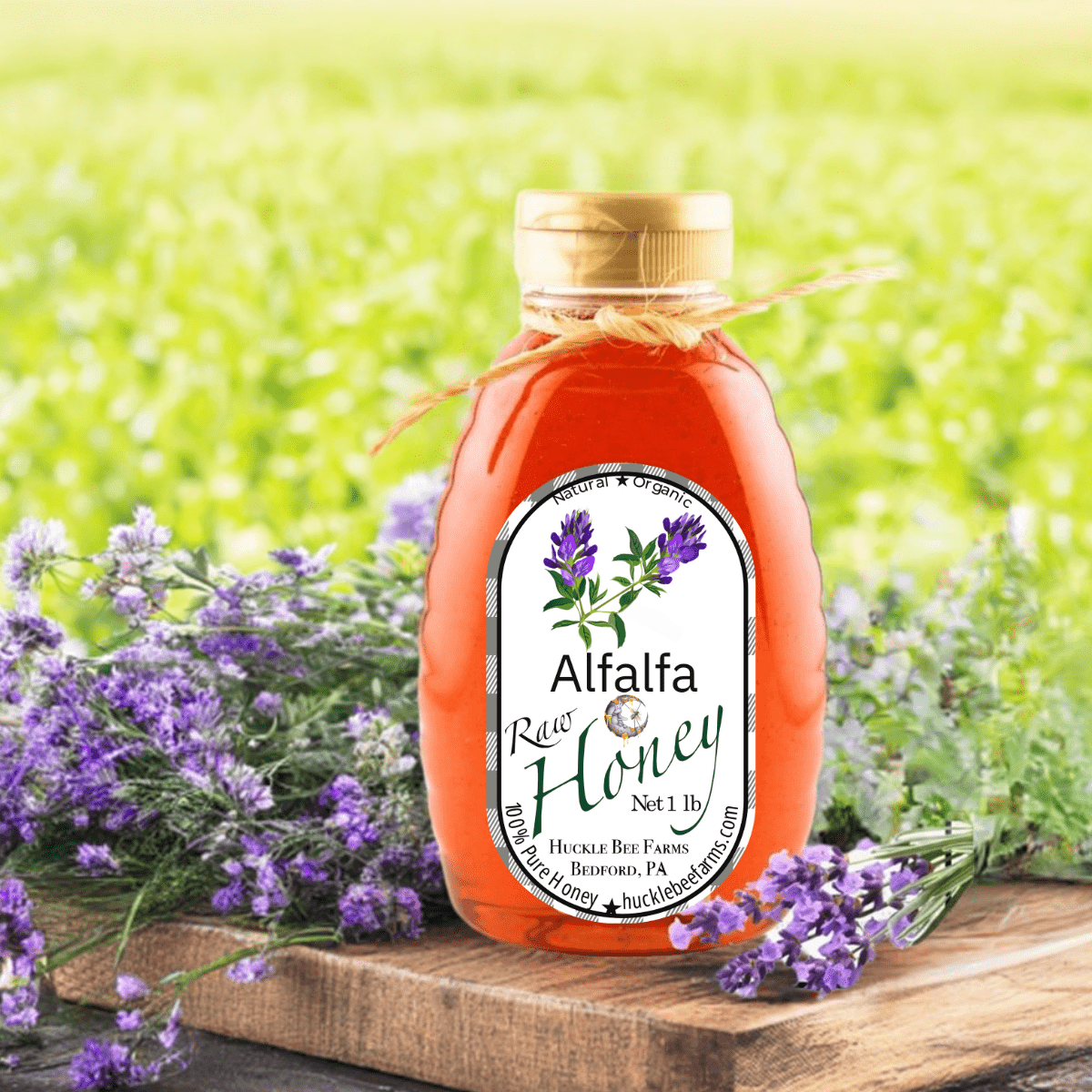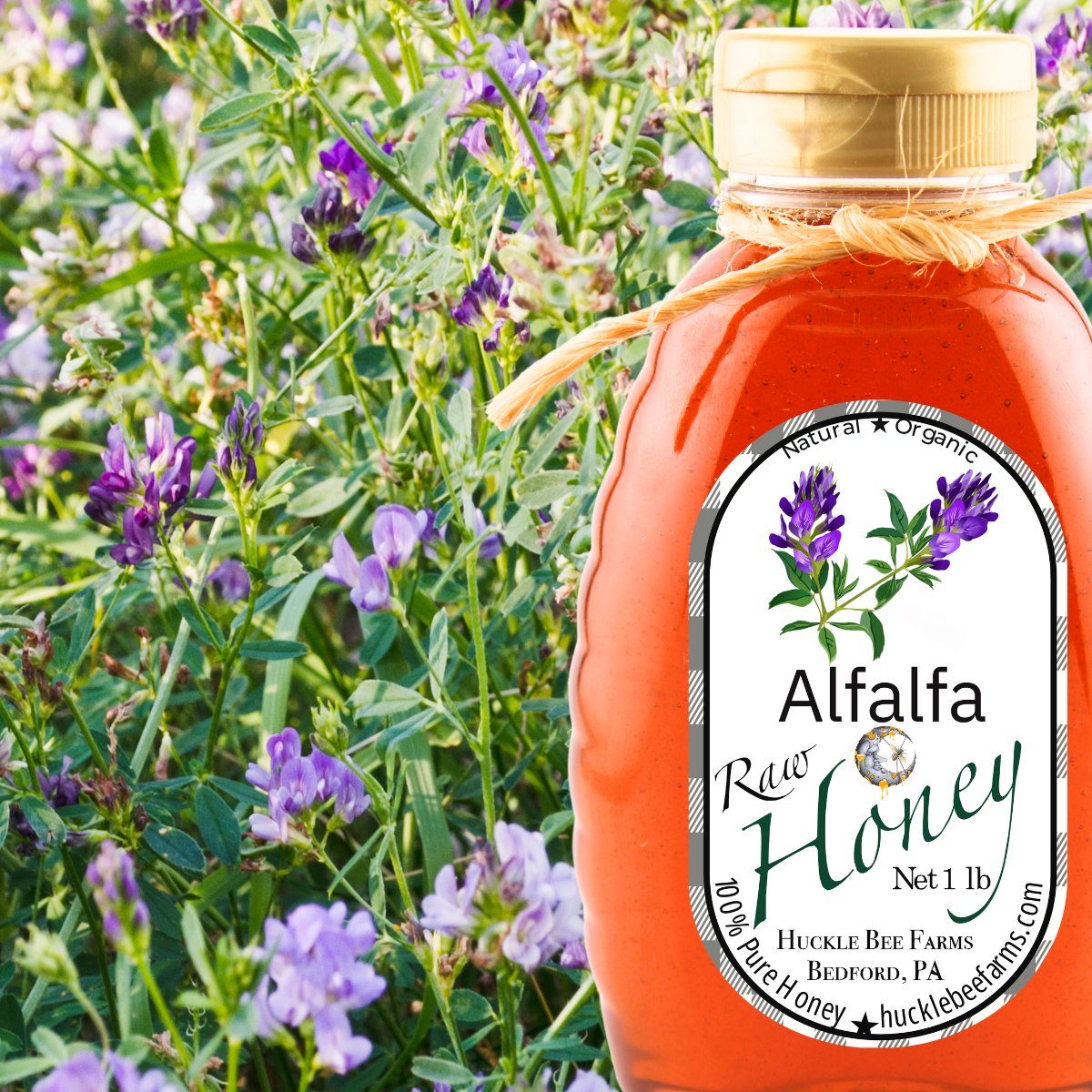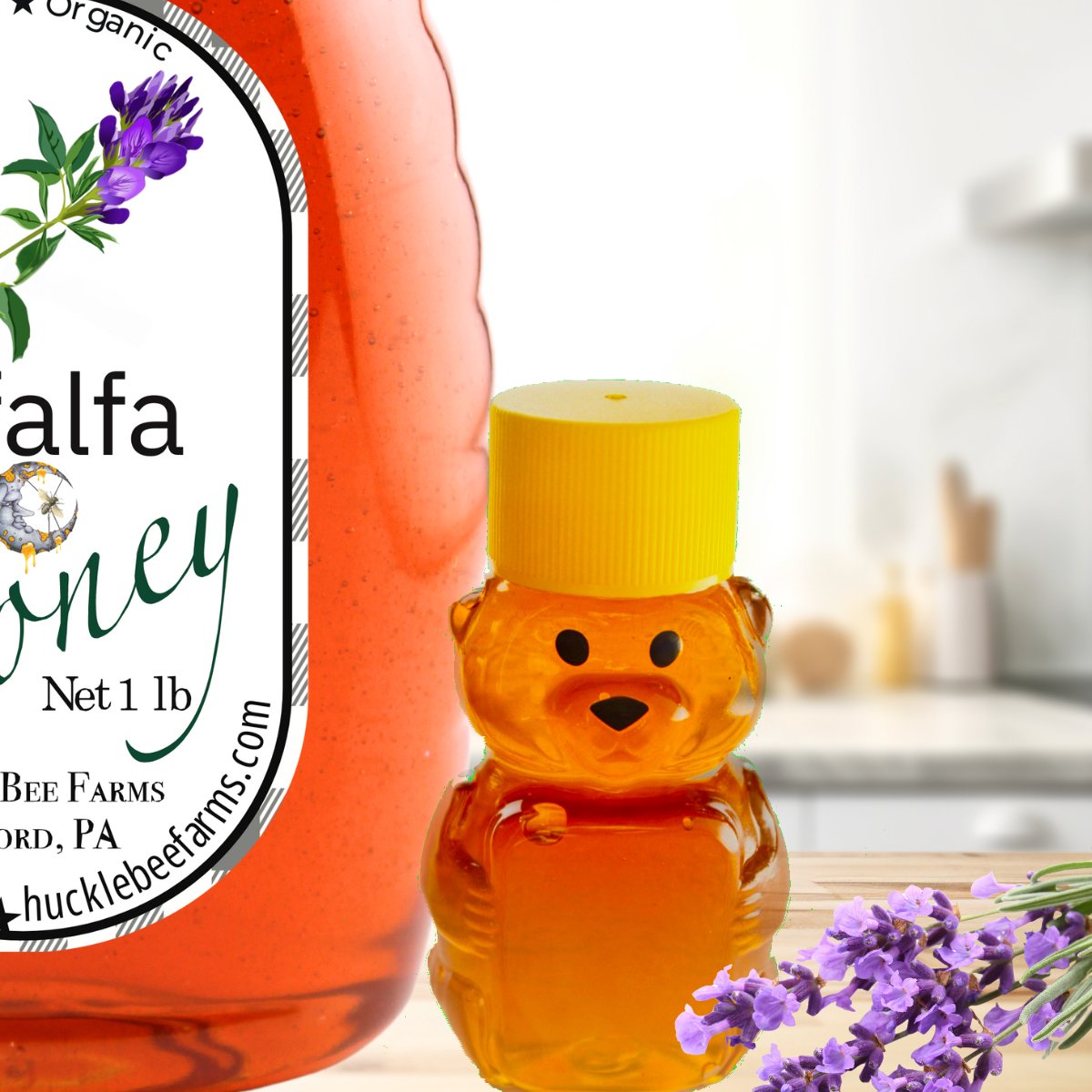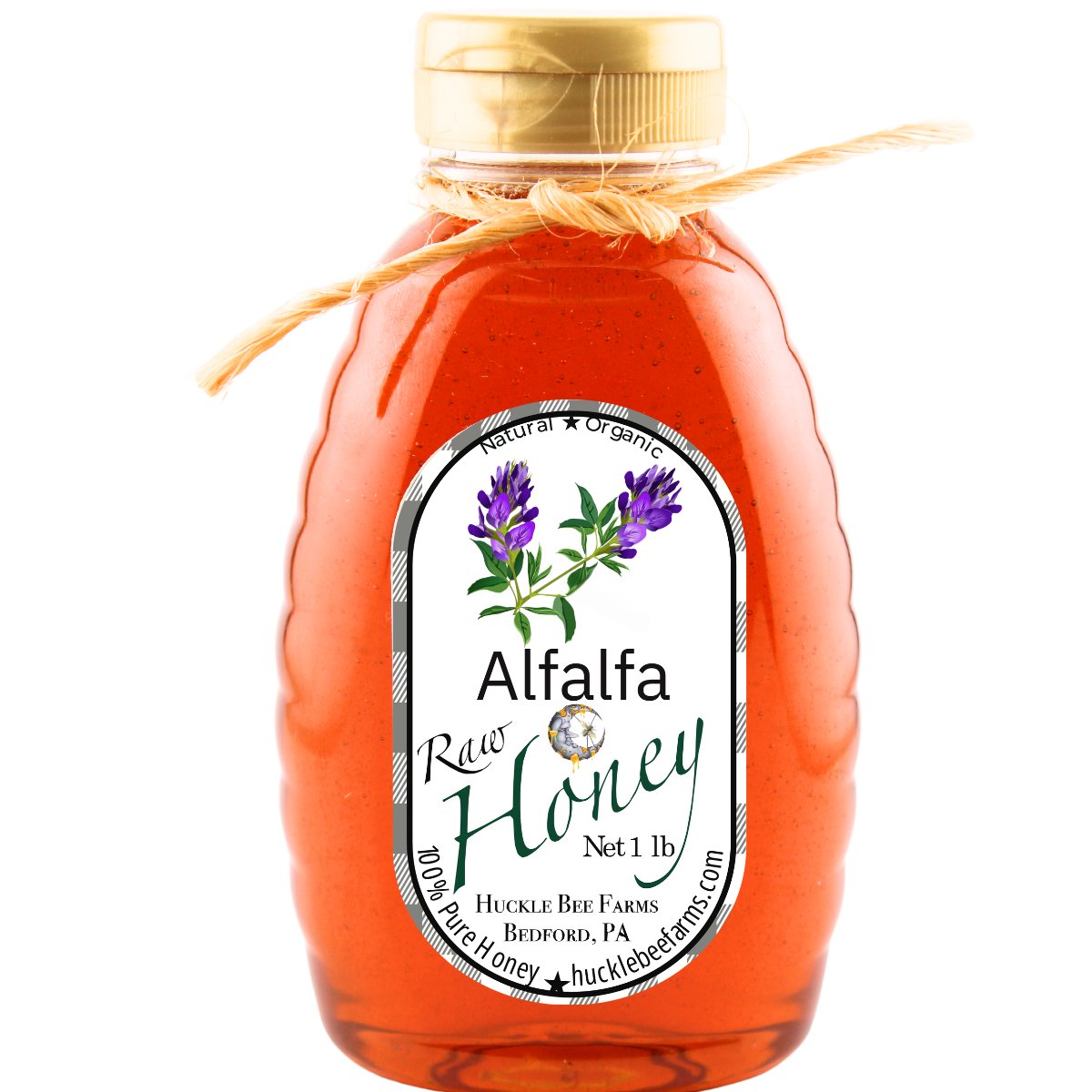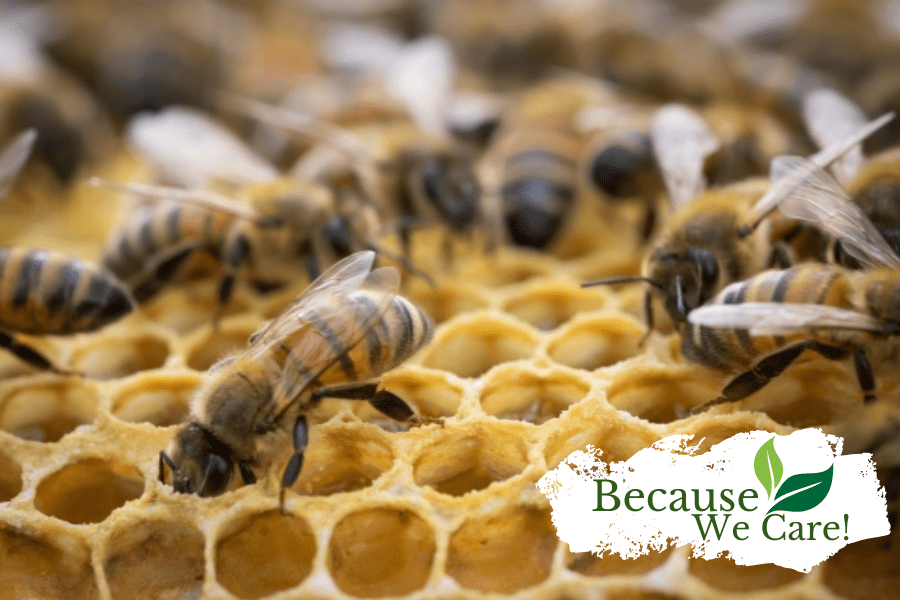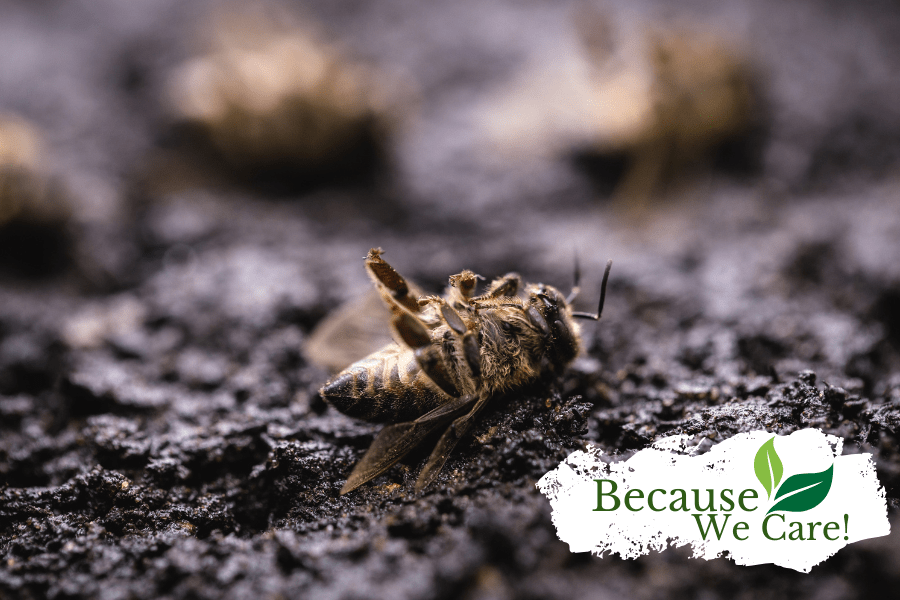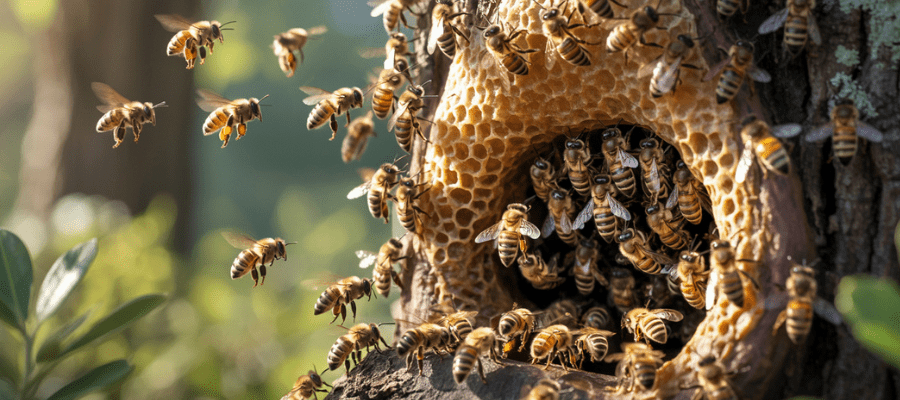
Huckle Bee Farms: America’s Infused Honey Pioneer Crafting Natural Flavor and Pollinator Awareness
Table of contents
Huckle Bee Farms LLC produces artisanal raw honey that emphasizes small-batch craftsmanship and flavor-forward infusions, offering a distinct alternative to conventional local honey. This article explains what makes raw honey different in nutrient content and sensory character, how infusions are crafted with real fruits, vegetables, and spices, and why minimal processing matters for both health and taste. Readers will learn the biochemical reasons raw honey retains enzymes and antioxidants, step-by-step descriptions of small-batch infusion methods, specific health attributes contributed by common infusion ingredients, and practical culinary uses. The piece also compares Huckle Bee Farms’ approach to typical local Pennsylvania honey producers, outlines pollinator and sustainability implications for honey quality, and provides clear purchase guidance and use ideas. By mapping evidence, practical tips, and product-level differentiation, this guide answers the most common questions about artisanal infused honey and helps you evaluate what to buy and how to use it.
What Makes Huckle Bee Farms’ Raw Honey Superior to Other Local Honey?
Raw honey is honey that has not been heated above natural hive temperatures or aggressively filtered, which preserves its native enzymes, antioxidants, and volatile flavor compounds. This preservation mechanism is crucial because enzymes like diastase and invertase remain active when honey avoids pasteurization, supporting digestion and maintaining complex floral aromatics that define local honey flavor. The result is a product with richer mouthfeel, layered tasting notes, and retained functional constituents that processed honey often loses. Understanding these technical and sensory differences clarifies why minimal processing and local forage sources matter for quality and consumer experience.
How Does Raw Honey Retain Natural Nutrients and Enzymes?
Raw honey retains natural nutrients and enzymes because it bypasses high-heat pasteurization and aggressive ultra-filtration, preserving delicate proteins and heat-sensitive compounds. Enzymes such as diastase and invertase remain structurally intact when honey is handled gently, enabling modest digestive activity and contributing to the honey’s biochemical complexity. This mechanism means raw honey can have measurable enzyme activity and more nuanced volatile profiles compared with heated honey, which tends to flatten floral notes. Preserving these components starts at hive management and continues through careful extraction and bottling practices to avoid thermal and mechanical degradation.
"Physicochemical and Pharmacological Properties of Raw vs. Regular Honey"
This research aimed to investigate and evaluate the phytochemical, physicochemical, sensory, microbiological, and pharmacological properties, such as antioxidant, anticancer, anti-elastase, anti-melanogenic, and anti-tyrosinase activity, in connection with health, safety, food, and nutritional benefits of raw (RHs) and regular (ReHs) Nigerian honey. Eighteen raw honey (RHs) samples and twelve regular honey (ReHs) samples were collected from the Republic of Nigeria. Tannin content, total phenolic content, total flavonoid content, moisture, ash, pH, EC, free acidity, proline, diastase, HMF, invertase, glucose, fructose, and sucrose were the tested phytochemical and physicochemical parameters. Fiehe, Lund and Lugol qualitative test were performed to test the purity of honey samples. The results obtained from the research showed that the quality of honey samples studied were within the recommended standard (Codex). The existence of the research findings showed that RHs proved exceptional pharmacological (anticancer, antibacterial, anti-melanogenic and antioxidant) activities against the cell line (MCF-7). The highest microbial count was observed in RHs (5.5 × 0.47 × 102cfu/100 g). There were no observable coliform growths in the samples. The findings in this current study showed that honey samples contain better consumable quality. In conclusion, honey can be potentially used as alternative treatments for controlling infectious diseases.
Physicochemical, phytochemical, antioxidant, and inhibition properties of key enzymes linked to raw and regular honey, GI Edo, 2022
What Are the Antioxidant and Immune Support Benefits of Raw Honey?
Raw honey contains a mix of flavonoids and phenolic acids that act as antioxidants, which help neutralize free radicals and moderate oxidative stress when included in the diet. These antioxidant compounds, together with trace vitamins and pollen constituents, contribute to honey’s reputation for immune-supportive properties in traditional and emerging scientific literature. While honey is not a cure, current research shows it can support mild antimicrobial actions and contribute to overall antioxidant intake when used sensibly. Consumers should view raw honey as a complementary food that can enhance dietary antioxidant variety rather than a stand-alone therapeutic.
How Does Local Pennsylvania Pollen Enhance Allergy Relief?
Local pollen in raw honey reflects the surrounding floral landscape and can provide trace exposures that some people believe support desensitization to seasonal allergens. The hypothesized mechanism is gradual, low-dose exposure to local pollens leading to immune tolerance, but clinical evidence remains mixed and largely anecdotal, so claims should be worded cautiously. Choosing honey sourced from local Pennsylvania flora increases the likelihood that the pollen profile matches local airborne allergens, which is central to the concept. For those considering honey for allergy strategy, combining cautious self-monitoring with professional medical advice is recommended.
Why Is Minimal Processing Important for Honey Quality?
Minimal processing preserves flavor, aroma, and functional compounds by avoiding high temperatures and heavy filtration that strip volatiles and degrade enzymes. Sensory outcomes include a fuller mouthfeel, visible pollen particulates, and more distinct floral or regional notes, while nutritional outcomes include higher measured antioxidant activity and detectable enzyme levels. Practically, minimal processing also supports traceability because small-batch workflows allow batch labeling and more transparent sourcing. Together, these factors explain why minimally processed raw honey frequently commands attention for culinary and functional uses.

How Does Huckle Bee Farms Craft Their Unique Artisanal Infused Honey?
Artisanal infused honey blends raw honey with real fruits, vegetables, or spices to create layered flavor profiles and add complementary functional attributes. The infusion philosophy emphasizes whole ingredients over extracts, allowing volatile compounds from fresh or dried additions to gently meld with raw honey during controlled maceration and resting. Small-batch craftsmanship creates traceable jars with consistent sensory checks, and the farm’s approach focuses on balancing brightness, sweetness, and spice while retaining the underlying raw wildflower honey character. This process transforms natural honey into a versatile culinary ingredient while preserving its native enzyme and antioxidant profile.
What Real Ingredients Are Used in Huckle Bee Farms’ Infused Honey?
Infusion ingredients are chosen from categories like roots (e.g., ginger), spices (e.g., cinnamon, chili), botanicals (e.g., citrus peel), and specialty items (e.g., espresso beans) to build distinct profiles. Using whole fruits, dried peels, toasted spices, or ground coffee provides complex aromatic oils and textural elements that slowly release into the honey without relying on synthetic flavorings. Ingredient selection favors authenticity to ensure each jar tastes like the named components and pairs naturally in recipes. Sourcing emphasizes quality and compatibility with raw honey’s flavor matrix to avoid masking the base hive character.
Introductory table: examples of infusion formats and suggested use cases.
| Infused Ingredient | Infusion Method | Flavor Profile & Suggested Uses |
|---|---|---|
| Ginger | Macerated fresh ginger slices, rested 2–4 weeks | Spicy-warm; tea, marinades, sore-throat remedies |
| Cinnamon | Toasted whole sticks steeped in honey | Warm, aromatic; oatmeal, baking, cheese pairings |
| Espresso | Whole roasted beans steeped and removed | Bitter-chocolate notes; desserts, coffee glazes, cocktails |
How Is the Small-Batch Infusion Process Performed?
Small-batch infusion follows a clear, stepwise workflow: prepare and sanitize containers, weigh chosen whole ingredients, gently fold them into raw honey, and allow a controlled rest period for flavor extraction with periodic sensory checks. Time and mild agitation determine extraction depth; shorter rests maintain subtlety while longer rests develop pronounced flavor notes, and batches are labeled with date and ingredient lot for traceability. Quality control includes tasting at set intervals, visual inspection for clarity and particulate levels, and adjusting harvest windows to match desired profiles. This hands-on approach supports reproducibility and preserves raw honey’s functional properties by avoiding heat.
Short numbered list: core infusion steps.
- Sanitize jars and prepare whole ingredients for infusion.
- Combine raw honey with ingredients in small batches and seal.
- Rest batches at stable temperatures with periodic sensory checks.
A brief summary: These three steps encapsulate the artisanal small-batch approach that prioritizes ingredient integrity and product traceability.
Which Flavor Profiles and Combinations Define Their Infused Honey?
Flavor families include floral-citrus, warm-spice, savory-smoky, and bold-roast, each created by pairing the raw wildflower base with complementary additions such as citrus peel, cinnamon, chili, or espresso. Signature combinations blend contrast and harmony—for example, a bright citrus infusion layered with floral honey or a warm cinnamon-enhanced honey for baking and cheese boards. Pairings are chosen to highlight honey’s natural sweetness while introducing accent notes that expand culinary use. Suggested pairings emphasize balancing aroma, acidity, and heat to create versatile condiments.
Bulleted flavor family examples:
- Floral-citrus: lemon peel, orange zest
- Warm-spice: cinnamon, ginger, clove
- Bold-roast: espresso, toasted cocoa nibs
Summary: Grouping flavors by family helps consumers select an infused honey that complements their intended use.

How Can Infused Honey Be Used Beyond Traditional Sweetening?
Infused honey extends beyond simple sweetening into glazes, marinades, cocktails, topical home remedies, and gifting applications by contributing both sweetness and targeted flavor or functional attributes. In cooking, it creates glossy glazes for roasted vegetables or proteins when combined with acid and aromatics, while in beverages it layers citrus, spice, or roast notes into tea and craft cocktails. Topical use for skin should be cautious and cosmetic-grade; honey’s humectant properties are useful in masks but medical claims should be avoided. The versatility of infused honey makes it valuable for chefs, home cooks, and creative givers.
Small list: creative uses
- Glaze and marinade base for roasted vegetables and meats.
- Cocktail sweetener offering complex aromatics and viscosity.
- Giftable specials in small jars for charcuterie and tea lovers.
Summary: These use cases showcase how infused honey becomes a multifunctional culinary and lifestyle product beyond table sweetening.
What Are the Health Benefits of Huckle Bee Farms’ Raw and Infused Honey?
Raw honey delivers a combination of antioxidants, trace pollen compounds, and prebiotic oligosaccharides that can support digestive balance and contribute to dietary antioxidant intake. Infused honey layers additional bioactive molecules from ingredients like ginger or cinnamon, which may add targeted anti-inflammatory or digestive benefits. The net functional profile therefore depends on both the raw honey’s preserved constituents and the infusion ingredient properties, making it important to evaluate each jar on its combined composition. Below, a compact comparison table clarifies the distinct and overlapping health attributes between raw and infused formats.
Introductory EAV table explaining raw vs infused health attributes.
| Product Format | Key Functional Attributes | Typical Health Contributions |
|---|---|---|
| Raw Wildflower Honey | Enzymes (diastase, invertase), flavonoids | Antioxidant support, mild antimicrobial activity |
| Ginger-Infused Honey | Gingerols, shogaols (from ginger) | Anti-inflammatory, aids digestion |
| Cinnamon-Infused Honey | Cinnamaldehyde, polyphenols | Blood sugar moderation support, warming digestive aid |
Summary: This comparison clarifies how raw honey’s baseline benefits are augmented by infusion-specific compounds to address particular wellness goals.
How Does Raw Infused Honey Support Digestive Health and Immunity?
Raw infused honey supports digestion and immunity through a combination of prebiotic oligosaccharides in honey and antimicrobial tendencies from its low water activity, while infusion ingredients can add digestive enzymes or anti-inflammatory compounds. The mechanism involves modest prebiotic fermentation supporting beneficial microbes and topical antimicrobial activity when honey is used in small amounts. Practical consumption suggestions include using a teaspoon in warm tea or as part of a balanced meal to support digestion, while avoiding use in infants under one year due to established safety contraindications. Consumers should pair usage with overall dietary practices for best outcomes.
What Specific Health Properties Do Infused Ingredients Add?
Each infusion ingredient contributes distinct phytochemicals that map to known physiological effects; for example, ginger delivers gingerols with anti-inflammatory action, cinnamon offers cinnamaldehyde with metabolic signaling effects, and chili adds capsaicin for circulatory stimulation. Mapping ingredient → active compound → benefit helps consumers choose infused honeys for targeted uses such as digestion, warming, or antioxidant support. Strength of evidence varies by ingredient: some have robust clinical literature, while others rely on traditional use and emerging studies, so claims should be balanced. Below is a compact EAV-style mapping of common infusion ingredients to their primary attributes.
| Ingredient | Active Compound(s) | Primary Benefit |
|---|---|---|
| Ginger | Gingerols | Anti-inflammatory, aids nausea relief |
| Cinnamon | Cinnamaldehyde | Digestive warming, metabolic support |
| Espresso | Chlorogenic acids | Antioxidant boost, flavor modulation |
Summary: Understanding ingredient chemistry clarifies how infusions extend honey’s functional profile and informs smart culinary and wellness choices.
Can Raw Infused Honey Help With Inflammation and Allergies?
Raw infused honey may modestly support inflammation management when ingredients with anti-inflammatory properties, such as ginger, are present, but evidence varies and should be contextualized as supportive rather than curative. Allergy-related benefits tied to local pollen exposure are plausible but not definitive, and individual responses differ widely; therefore, responsible language is essential. If inflammation or allergy symptoms are significant or persistent, professional medical guidance is necessary. Using infused honey as part of a varied diet can complement other strategies but should not replace evidence-based medical treatments.
How Does Huckle Bee Farms Support Pollinators and Sustainability?
Supporting pollinators is integral to maintaining diverse floral sources that produce complex honey flavors, and practices that enhance habitat and forage availability directly influence honey quality and ecosystem resilience. Sustainable beekeeping practices such as preserving forage corridors, avoiding unnecessary chemical treatments, and educating the community about pollinator importance contribute to healthier colonies and more consistent honey yields. These practices also feed back into better flavor complexity because bees that access diverse local flora bring varied pollens and nectar that shape the honey’s sensory fingerprint. Detailing these linkages helps readers see sustainability as both an ecological and product-quality priority.
What Pollinator Protection Initiatives Does Huckle Bee Farms Practice?
Huckle Bee Farms emphasizes pollinator advocacy and habitat stewardship as part of its farm ethos, focusing on practices that support local forage and bee health. Initiatives include habitat enhancement, educational outreach, and advocacy efforts that promote pollinator-friendly plantings and responsible land management. These actions aim to increase floral diversity for bees and reduce exposure to harmful inputs in the landscape. Readers can support similar efforts by planting native forage, reducing pesticide use, and participating in local pollinator campaigns.
Short bulleted action list for readers:
- Plant native pollinator-friendly flowers and shrubs.
- Reduce or eliminate pesticide use in home gardens.
- Support local advocacy and conservation initiatives.
Summary: Individual and collective actions reinforce farm-level pollinator work and improve local ecosystem services.
How Do Sustainable Beekeeping Practices Impact Local Ecosystems?
Sustainable beekeeping contributes to biodiversity by ensuring pollinators can service a wide range of native plants and crops, which enhances ecosystem resilience and food production capacity. Practices that maintain healthy bee populations support pollination services that increase yield and quality for many local crops, promoting a virtuous cycle between farming practices and community food systems. Over time, these practices improve habitat connectivity and reduce the need for artificial inputs, benefiting soil, plant diversity, and long-term landscape health. The cumulative ecological impact underscores why sustainable beekeeping is both an environmental and economic priority.
Why Is Supporting Pollinators Vital for Honey Quality and Food Production?
Pollinator health directly affects honey flavor diversity because bees collect nectar from available flora—the more diverse the forage, the more complex the honey’s aromatic and taste profile becomes. Beyond flavor, robust pollinator populations underpin agricultural productivity and food system stability, linking a jar of honey to broader food security considerations. Supporting pollinators therefore preserves culinary variety and strengthens local food webs that farmers and consumers rely on. Encouragingly, small changes in land management and consumer choices can have measurable effects on pollinator viability.
How Does Huckle Bee Farms Compare to Other Local Pennsylvania Honey Farms?
Comparing Huckle Bee Farms to more conventional local operations highlights differences in product focus and processing standards: Huckle Bee Farms centers on 100% raw honey and an Artisanal Infused Honey Collection crafted in small batches, whereas some local producers may offer pasteurized or broadly filtered honey and larger-scale production. Key differentiators include infusion creativity, raw-only policy, and a visible pollinator advocacy stance that ties production methods to environmental commitments. This objective perspective helps consumers evaluate trade-offs between scale, flavor diversity, and processing choices when selecting local honey.
What Unique Product Range Does Huckle Bee Farms Offer?
Huckle Bee Farms’ product offering centers on an Artisanal Infused Honey Collection alongside plain raw honey and a broader site structure implying categories such as tea collections, spices, and gifts. Presenting both plain and infused options allows consumers to choose a minimal raw product or a flavor-forward jar tailored to culinary or wellness uses. Signature and seasonal offerings likely rotate with forage and ingredient availability, enhancing uniqueness and encouraging exploration. For buyers seeking novel flavor profiles and small-batch authenticity, the infused collection is the standout category.
Introductory product-category list:
- Plain raw wildflower honey for classic uses.
- Artisanal Infused Honey Collection featuring real ingredients.
- Complementary items implied by site structure: tea and gift options.
Summary: The product range balances foundational raw honey with creative, small-batch infusions for diverse applications.
How Do Quality Standards at Huckle Bee Farms Exceed Competitors?
Quality standards at Huckle Bee Farms emphasize a raw-only approach, small-batch production for traceability, and careful ingredient selection for infusions—practices that contrast with conventional pasteurization and bulk processing. This results in jars that retain enzymatic activity and nuanced flavors while allowing batch labeling and sensory quality checks. Compared with traditional large-scale methods, small-batch artisanal control reduces the risk of over-processing and supports higher consistency in flavor and function. These procedural choices create meaningful differentiation in both product character and consumer transparency.
Comparison table: processing and sourcing attributes.
| Attribute | Huckle Bee Farms Approach | Conventional Local Approach |
|---|---|---|
| Processing | Raw-only, minimal heat | Often pasteurized or heavily filtered |
| Batch Size | Small-batch with traceability | Larger-scale bulk runs |
| Ingredient Sourcing | Whole, real ingredients for infusions | May use extracts or flavorings |
Summary: This comparison highlights how processing and batching decisions shape final honey quality and consumer trust.
What Do Customers Say About Huckle Bee Farms’ Honey?
Customer feedback themes for artisanal infused honey typically emphasize distinct flavors, perceived quality, and suitability for gifting and culinary uses, reflecting the value of small-batch craftsmanship. Comments often note how well-infused flavors integrate with the honey’s base, enhancing tea, cheese, and baking experiences, and how presentation makes jars attractive as gifts. For prospective buyers, these themes serve as social proof that artisanal methods can produce reliably flavorful and usable products. Including verified review excerpts and structured ratings on product pages would further strengthen trust in future iterations.
What Are the Best Ways to Enjoy and Use Huckle Bee Farms’ Artisanal Honey?
Infused honeys excel in recipes, pairings, and applications that allow their specific flavor notes to shine, from finishing glazes and dressings to enriching tea and desserts. Using small amounts often yields the best balance: a spoonful in tea, a drizzle over cheese, or a glaze component for roasted vegetables unlocks concentrated aromatics without overpowering a dish. Experimentation with substitution ratios and pairing frameworks helps home cooks integrate infused honey into everyday meals and special-occasion dishes. Below are concise recipe ideas and substitution tips to help readers maximize the product’s culinary potential.
Which Recipes Highlight the Flavors of Infused Honey?
Short, focused recipes show how infused honey becomes the star ingredient in simple preparations like a lemon-honey panna cotta, ginger-honey glazed carrots, and espresso-honey ice cream drizzle. Each recipe centers a single infused jar to showcase its unique aromatic profile while keeping ingredient lists short and techniques approachable for home cooks. These applications emphasize honey’s dual role as a sweetener and flavor amplifier. Linking recipes to specific infusion families helps readers choose the right jar for the intended dish.
Numbered recipe examples:
- Lemon-honey panna cotta: citrus-infused honey folded into cream and set with gelatin.
- Ginger-honey glazed carrots: roasted carrots tossed with ginger-infused honey and butter.
- Espresso-honey drizzle: warmed espresso-infused honey spooned over vanilla ice cream.
Summary: These recipes demonstrate how infused honey enhances desserts and savory sides with minimal effort.
How Can Infused Honey Enhance Tea, Baking, and Cooking?
Infused honey modifies flavor profiles in beverages and recipes by adding layered aromatics that pair with core ingredients; for example, cinnamon-infused honey intensifies warm baked goods while citrus-infused honey brightens herbal teas. Substitution guidance generally uses a 1:1 swap for liquid sweeteners but suggests slight reductions in liquid to account for honey’s viscosity and sweetness concentration. Best practices include gentle heating to preserve volatile notes and adding honey late in cooking to retain aromatics. These techniques maximize flavor impact while preserving the honey’s raw qualities.
What Are Creative Pairings for Small Batch Flavored Honey?
Creative pairings align infused honey families with cheeses, fruits, and beverages—for instance, cinnamon honey with aged cheddar, citrus honey with soft goat cheese, and espresso honey with dark chocolate or coffee-forward cocktails. Presentation ideas include pairing boards with labeled tasting spoons, mini jars for gift sets, and curated pairings for tea service. These pairing strategies enhance tasting experiences and stimulate gifting opportunities. Thoughtful presentation underscores the artisanal quality and encourages culinary experimentation.
Bulleted pairing examples:
- Cinnamon honey + aged cheddar + toasted walnuts.
- Citrus honey + goat cheese + fresh figs.
- Espresso honey + dark chocolate truffles + shortbread.
Summary: Matching flavor families to complementary foods amplifies both the honey and paired elements in enjoyable ways.
Where Is Huckle Bee Farms Located and How Can You Purchase Their Honey?
Huckle Bee Farms is based in Bedford, Pennsylvania, and operates with a clear focus on small-batch artisanal production and pollinator advocacy, integrating raw-only honey principles into its product lineup. Customers seeking to purchase can explore the farm’s product categories—such as Artisanal Infused Honey Collection, plain raw honey, tea-related items, spices, and gift options—through the farm’s primary online storefront and likely local market presences suggested by the site structure. Freshness and quality are supported through batch labeling, small production runs, and careful packaging choices that preserve the raw honey profile during transit. This purchase guidance helps buyers find the right category and set expectations for shipping and product presentation.
What Is the History and Mission of Huckle Bee Farms in Pennsylvania?
Established in 2012, Huckle Bee Farms positions itself around a mission to deliver 100% raw honey elevated through artisanal infusion and to support pollinator advocacy as part of its farm identity. The mission ties product quality directly to environmental stewardship by asserting that better bee health and forage diversity yield superior honey flavor and functional qualities. Framing the brand through its founding and mission language clarifies why production choices such as raw-only processing and small-batch infusion are central to its value proposition. This historical and mission context helps customers connect product attributes to farm practices.
How Can Customers Buy Raw Infused Honey Directly From the Farm?
Customers can purchase raw infused honey by exploring the farm’s product categories—Infused Honey, Plain Honey, Tea Collection, Spices, and Gifts—on the farm’s online storefront or at local market outlets where small-batch producers typically sell. When selecting infused flavors, readers should match flavor families to intended uses (e.g., warm-spice for baking, citrus for beverages) and look for batch labeling that indicates freshness and ingredient transparency. Tips include starting with a small jar to test pairings and checking product descriptions for suggested culinary uses. These steps simplify the buying process and help align purchases with consumer needs.
Introductory purchase checklist:
- Identify intended use (tea, baking, gifting) to choose appropriate flavor family.
- Prefer small-batch labeled jars for traceability and freshness.
- Consider companion products such as tea or spice items for gifting bundles.
Summary: Practical shopping guidance empowers buyers to select the best product for their culinary or gifting purpose.
How Does Huckle Bee Farms Ensure Freshness and Quality in Shipping?
Ensuring freshness and quality involves packaging choices, batch labeling, and shipping timelines that prioritize minimal handling and protection from extreme temperatures; these measures preserve volatile aromatics and enzyme activity in raw honey. Batch dating and small-batch runs enable traceability and give customers clarity about production timing, while packaging standards protect jars during transit and limit exposure to conditions that could affect texture. Clear customer service guidance about handling and storage after receipt completes the quality assurance loop and fosters consumer confidence in raw, unprocessed products. These practices support the farm’s commitment to delivering artisanal honey that retains the character of its local Pennsylvanian origins.
"Herbal-Infused Honey: Health Benefits and Bioactive Compounds"
Honey, a nutritious viscous liquid produced by the honeybees (Apis mellifera) has been an important ingredient of many Ayurvedic traditional medicines. Honey as a natural product is preferred to prepare many contemporary medications, nutritional supplements, cosmetics and food & beverage additives. The composition of the honey being produced by the honeybees is greatly influenced by the ecological habitat where bees establish hive and collect honey. The widely noticed bacterial drug resistance has prompted the scientific community to explore for alternative medicines, including herbal antibiotics, particularly to treat the bacterial infections. The bioactive ingredients work together to maximise therapeutic efficacy while reducing side effects of synthetic drugs, too. Honey’s unique chemical makeup includes reducing sugars, vitamins, minerals and enzymes. When it is mixed with physiologically active chemicals, such as plant secondary metabolites like phenolic acids, flavonoids, coumarins, tannins, lignans and terpenoids, the honey infusion contributes to its pro-health benefits. The natural bio-active compounds present in herbal honey infusions provide discernible biological effects such as antibacterial, antioxidant, antiinflammatory, antiallergic, antithrombotic and vasodilatory properties, as well as antineoplastic and antiaging effects in the consumers.
Herbal-Infused Honey vis-à-vis Human Health, R Kumar, 2024

Frequently Asked Questions
What is the difference between raw honey and regular honey?
Raw honey is unprocessed and unpasteurized, meaning it retains its natural enzymes, antioxidants, and flavor compounds. In contrast, regular honey is often heated and filtered, which can strip away these beneficial properties. This processing can lead to a loss of flavor complexity and nutritional value. Raw honey, like that from Huckle Bee Farms, is known for its richer taste and health benefits, making it a preferred choice for those seeking a more authentic honey experience.
How should I store raw infused honey to maintain its quality?
To maintain the quality of raw infused honey, store it in a cool, dark place away from direct sunlight and heat sources. Ideally, keep it in an airtight container to prevent moisture absorption and contamination. Avoid refrigerating honey, as this can cause it to crystallize. If crystallization occurs, gently warm the jar in a warm water bath to return it to a liquid state without overheating, which can damage its beneficial properties.
Can I use infused honey in baking, and how does it affect the flavor?
Yes, infused honey can be used in baking, and it often enhances the flavor profile of baked goods. When substituting sugar with infused honey, use a 1:1 ratio but reduce the liquid in the recipe slightly to account for honey's moisture. The unique flavors from the infusion, such as ginger or cinnamon, can add depth and complexity to cakes, cookies, and breads, making them more aromatic and flavorful.
Are there any dietary restrictions to consider when using infused honey?
While infused honey is generally safe for most people, those with allergies to specific infusion ingredients, such as ginger or cinnamon, should exercise caution. Additionally, honey should not be given to infants under one year due to the risk of botulism. For individuals with diabetes or those monitoring sugar intake, it's important to use honey in moderation, as it is still a form of sugar and can affect blood glucose levels.
What are some creative ways to use infused honey in everyday meals?
Infused honey can be creatively incorporated into various dishes beyond sweetening. Use it as a glaze for roasted vegetables or meats, drizzle it over cheese for a gourmet touch, or mix it into salad dressings for added flavor. It can also enhance beverages like tea or cocktails, providing a unique twist. Experimenting with infused honey can elevate everyday meals and introduce new flavor combinations.
How does Huckle Bee Farms ensure the sustainability of their honey production?
Huckle Bee Farms practices sustainable beekeeping by enhancing pollinator habitats and avoiding harmful chemicals. They focus on maintaining healthy bee populations, which is crucial for producing high-quality honey. Their commitment to environmental stewardship includes educating the community about the importance of pollinators and promoting practices that support biodiversity. This holistic approach not only benefits honey quality but also contributes to the overall health of local ecosystems.
Conclusion
Huckle Bee Farms’ artisanal raw and infused honey offers a unique blend of flavor, health benefits, and sustainable practices that set it apart from conventional honey producers. By prioritizing minimal processing and small-batch craftsmanship, their products retain essential nutrients and complex flavors, enhancing both culinary experiences and wellness. Exploring their diverse selection allows consumers to discover the perfect honey for any occasion, from everyday sweetening to gourmet gifts. Visit Huckle Bee Farms today to elevate your honey experience and support local pollinators.







